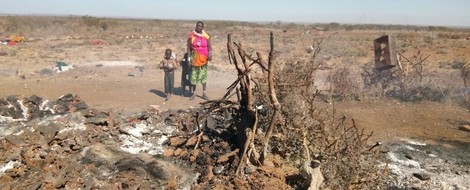Your podcast discovery platform
Curious minds select the most fascinating podcasts from around the world. Discover hand-piqd audio recommendations on your favorite topics.

piqer for: Climate and Environment
Pamela works as a Press & Communications Manager for an international NGO (IWGIA) defending indigenous peoples' rights. She holds an Erasmus Mundus MA in Journalism, Media & Globalisation from Hamburg and Aarhus University and an MA in Political Science from the University of Buenos Aires. She will be putting the eye on international media coverage of indigenous communities and their demands.
Disrupted Survival: Conflict In Laikipia Unfolded
Laikipia county marks the frontier of what is called Northern Africa. From there up the landscape begins to get dry and all you see is arid land. In the last year, the severe drought became a trigger point to a major unresolved land conflict. The ongoing conflict between private owners and indigenous pastoralists now affects over 200,000 people. Between 25 to 50 individuals are estimated to have been killed so far.
The question of land ownership is old in the country and has always led to periodic explosions of violence. Decades of unsustainable development now show their impacts on the relationship between ecosystems and people, especially indigenous pastoralists.
In Kenya, the peoples who identify with the indigenous movement are estimated to represent 25% of the national population. Pastoralists are nomadic and base their economy on livestock production. The chain of events is pretty straightforward: when there is no water, no grass grows and pastoralists’ cattle starve to death. This puts indigenous peoples’ food security and well-being directly at risk.
An untold tale of political violence and forgotten recognition
Pushed by a severe drought affecting the region since the beginning of the year, pastoralists have made their way into private lodges, farms, and conservation areas, actions that have caused conflicts and violence.
The predominant narrative of the conflict is very simplistic, depicting a fight between “dangerous and violent nomadic herders” and “hardworking farmers and conservationists”. In this picture, without the drought, no story would be there to be told.
This piece tells the story from the eyes of those who suffer the most, and whose rights and means of survival have always been at risk.
Is this a case where climate change resolves a historic land issue? Find out yourself by giving this piece a read.
*Small big disclaimer: I wrote this investigative piece in close collaboration with Mali Ole Kaunga, an indigenous leader on the field.
Stay up to date – with a newsletter from your channel on Climate and Environment.
